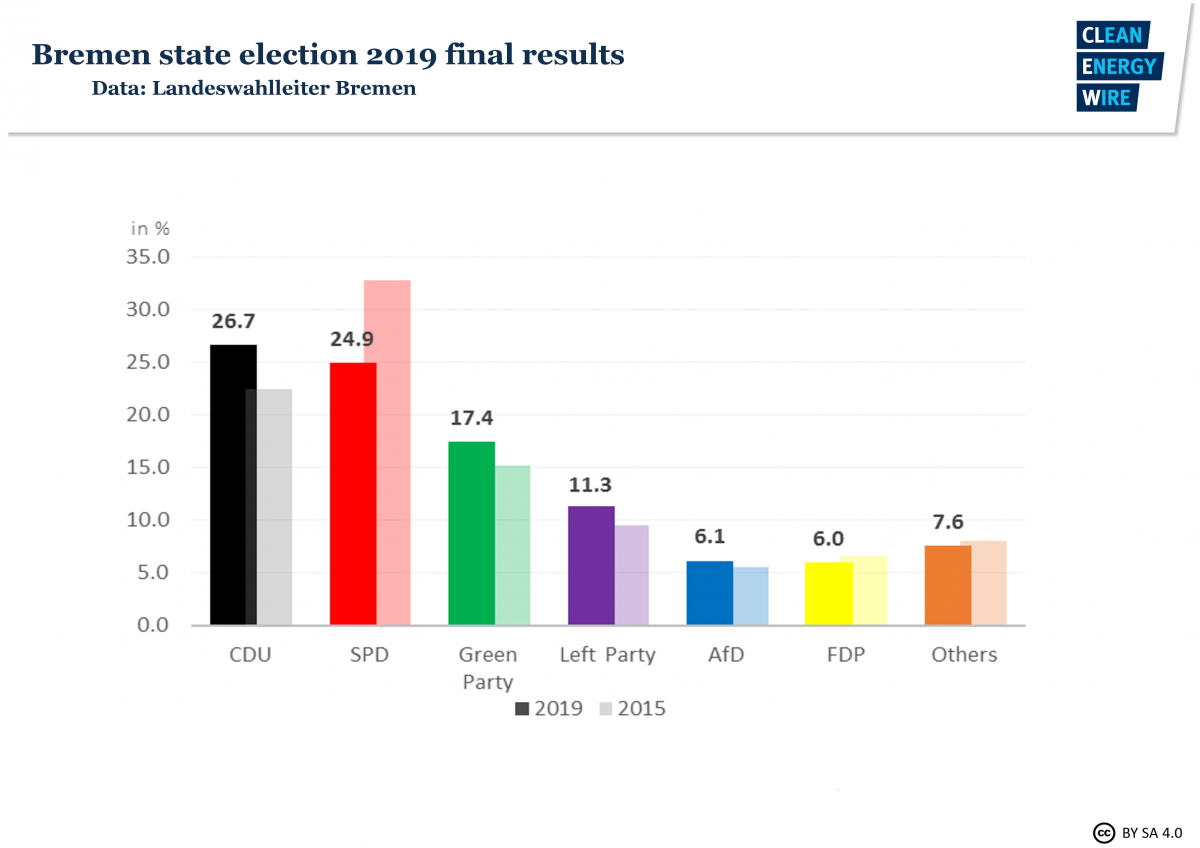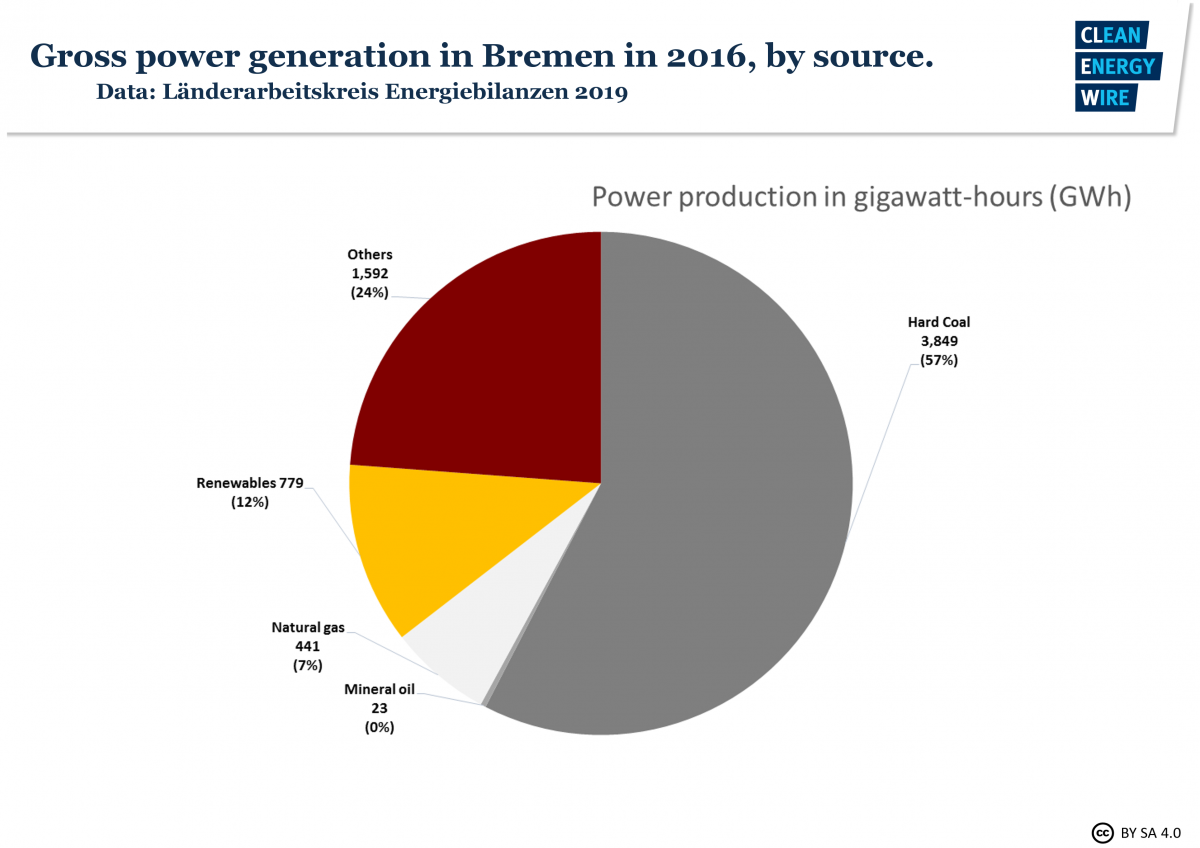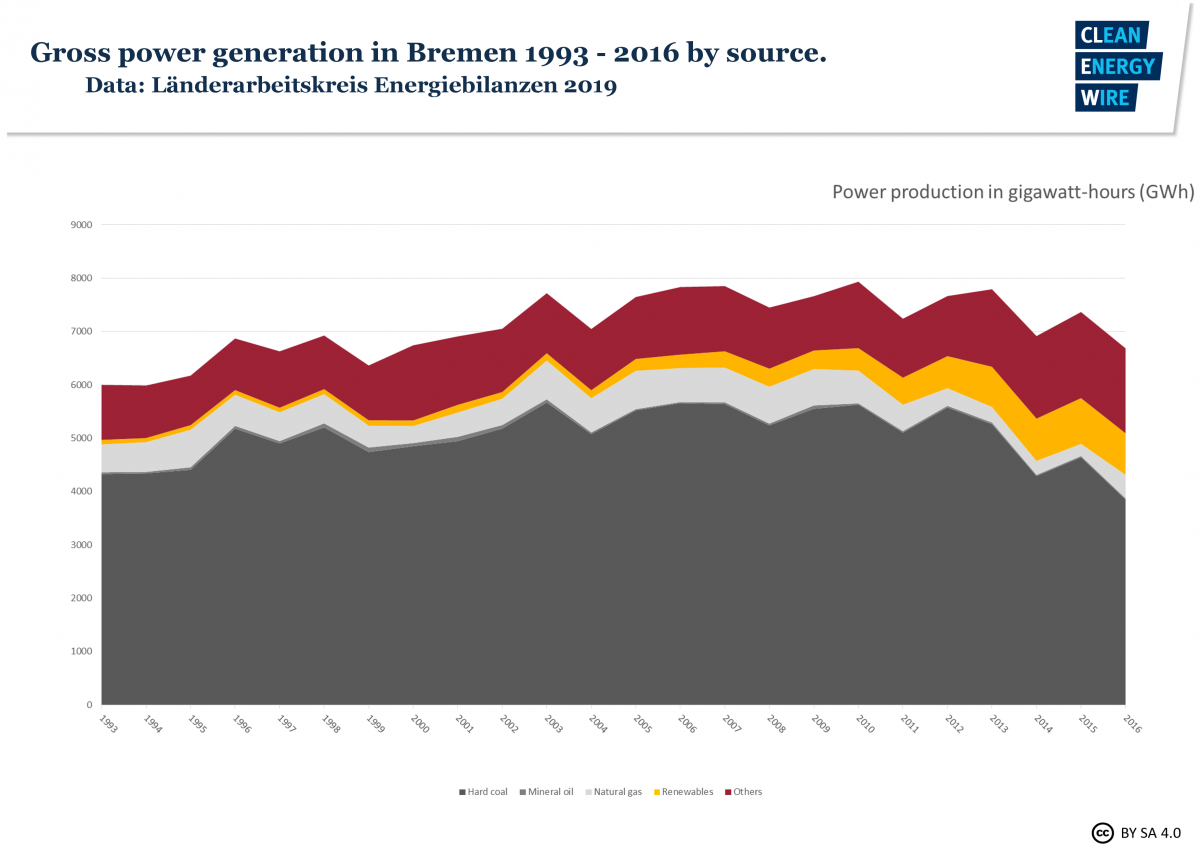Facts on the German state elections in the city of Bremen
State of Bremen
The state consists of the city of Bremen as well as the small exclave of Bremerhaven in Northern Germany, surrounded by the larger state of Lower Saxony.
Population: 681,592 (September 2018)
State Capital: City of Bremen
Votes in the Bundesrat: 3 out of 69
Government (before election):
Social Democratic Party of Bremen (SPD) and the Green Party of Bremen (Green Party)
Mayor and President of the Senate: Carsten Sieling (SPD)
Senator for Economic Affairs, Labour and Ports: Martin Günthner (SPD)
Senator for Environment, Building and Transportation: Dr. Joachim Lohse (Green Party)
State parties’ election programmes (in German):
SPD, CDU, Green Party, Left Party, FDP, AFD, BIW
Climate and energy policy in Bremen
The State of Bremen aimed to set the course for ambitious climate action and a rethinking of energy use with its Climate Protection and Energy Programme 2020. It was adopted by the city’s government (called Senate in the city states) in 2009, setting the target of CO2 emissions reduction by at least 40 percent compared to 1990 levels by 2020 (CO2 emissions from the steel industry excluded). In March 2015 the Bremen Climate Protection and Energy Act (BremKEG) enshrined the target into law. With the law, the state of Bremen laid down requirements and framework conditions for climate protection and adaptation to climate change with the goal to reduce emissions by 80-95 percent by mid-century. It obliges the government to introduce interim CO₂ reduction targets for 2030 and 2040 in due course.
[Find more information on renewable energy in Bremen on the website of the Renewable Energies Agency (AEE) (in German)]




